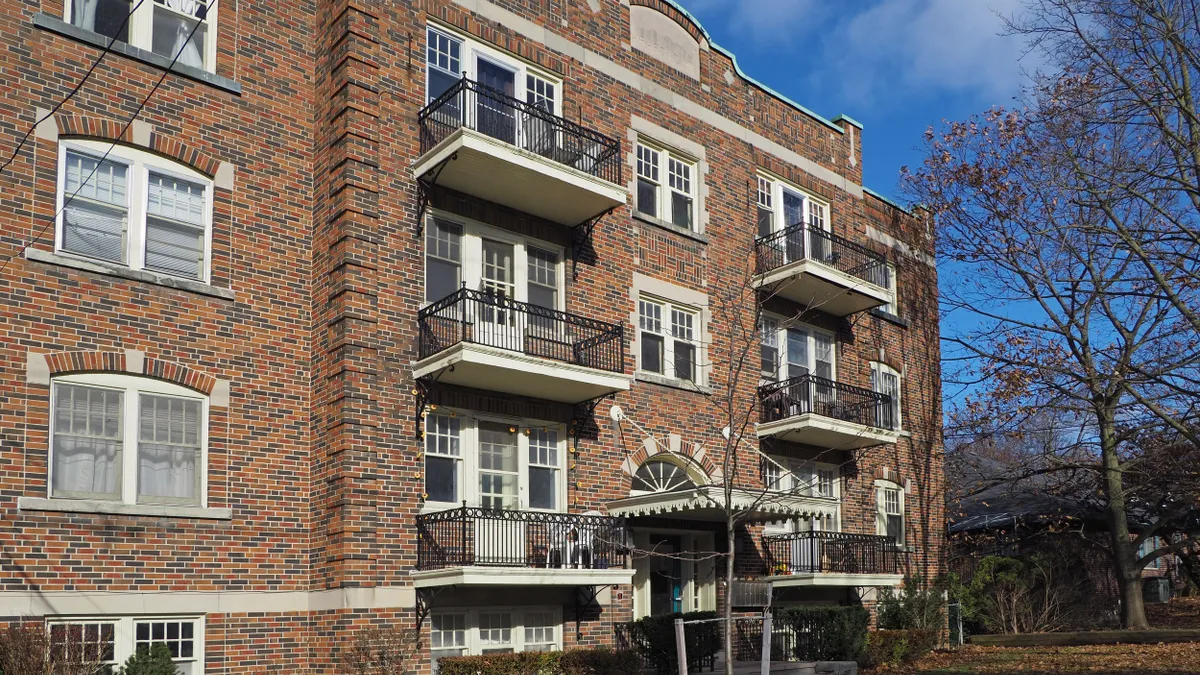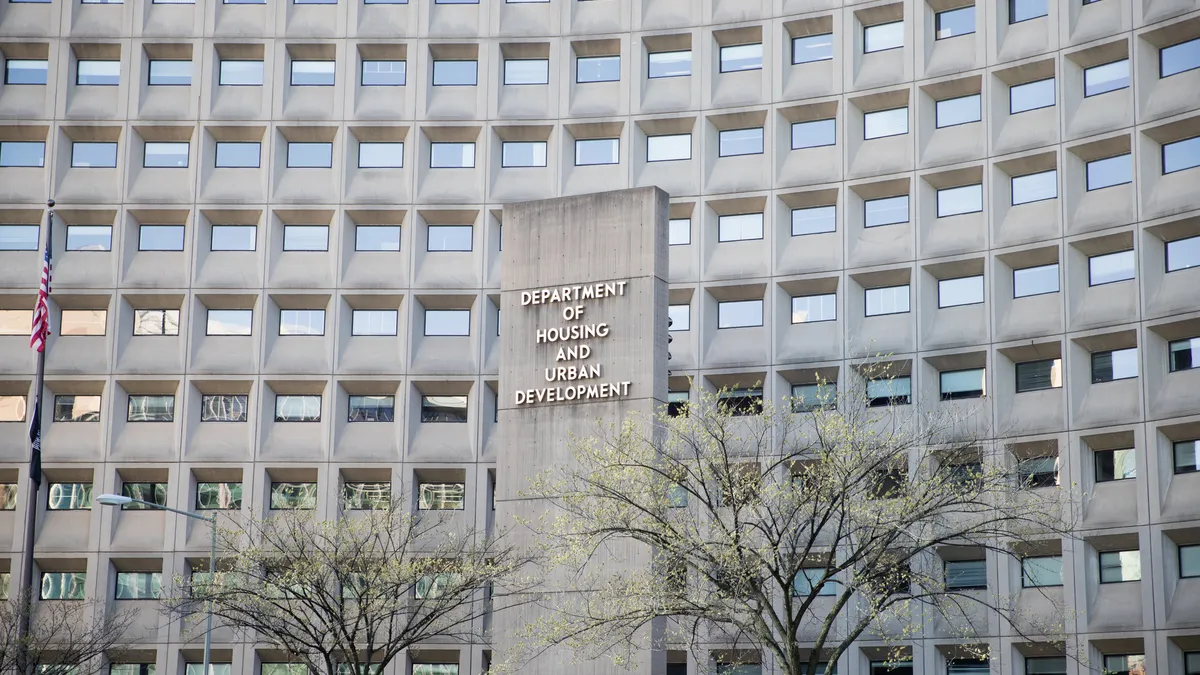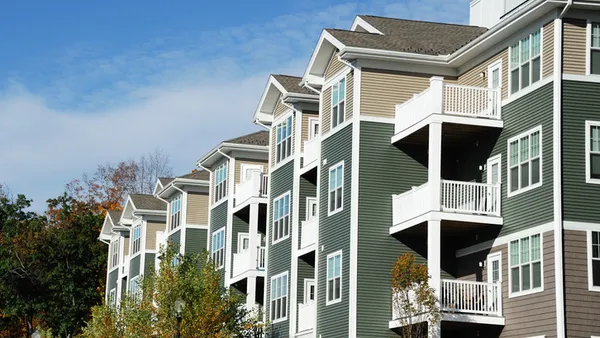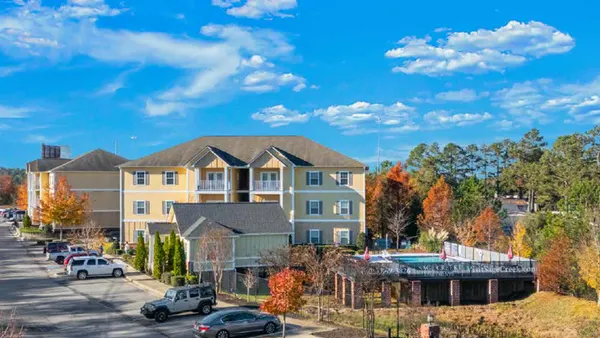Apartment owners looking to capture outsized rent growth should look to older properties, a new report says.
Apartment communities built before 2010 averaged 4.6% annual rent growth over the past decade compared with 3.4% for those constructed in the past 13 years, according to Dallas-based commercial real estate services firm CBRE Research.
“This trend is largely attributable to pre-2010 properties having lower average rents and therefore more room for growth in a continued high-demand housing market,” CBRE said in the research brief shared with Multifamily Dive.
Looking back further to 1998, which covered three recessions, to determine average rent growth over a 30-year cycle, CBRE found that properties don’t surpass the long-run market average of 2.7% rent growth until their second decade. The only exception is the 3.8% average rent growth in their first year.
“As properties enter their second decade, they shift from underperforming to outperforming market rent growth,” Matt Vance, Americas head of multifamily research for CBRE, said in the brief.
In the third decade, rent growth peaks between 3.5% and 4.0% for apartments.
Michael McClearn, acquisitions manager and operations coordinator for Long Beach, California-based private apartment owner Plenty of Places Apartment Homes, is currently seeking properties In Denver. In that city, location can drive outsized returns for these older properties. However, market conditions are causing the company to shift to newer buildings.
“Generally speaking, older buildings are situated in highly desirable parts of town,” McClearn said. “Location can play a huge factor in a building's ability to drive rent growth over the long run. These older assets were first to the block.”
In addition, residents in older properties may be less likely to buy a house, reducing a major reason for move outs. “Newer properties often lose tenants to single-family ownership, hurting their occupancies and hence lower rent growth,” said Venkat Avasarala, managing principal of Dallas-based owner Stryker Properties.
Managing the downside
Older properties aren’t without risk, however. They don’t have modern amenities and are more likely to need repairs. With expenses rising, those updates can be especially difficult.
“It is crucial to recognize that older properties present distinct challenges, such as the need for capital expenditures for maintenance, which should be carefully considered during the underwriting process,” Vance said.
Without modern amenities, attracting more affluent tenants can be difficult. “As such, managing turnover and rent collections may present additional challenges,” CBRE said in the brief.
Many companies account for these risks with higher cap rates and internal rates of return when underwriting older properties. “Investors who are focused on outpacing overall market rent growth should consider older properties if pricing is adequately risk-adjusted,” according to CBRE.
If investors can adequately price the additional risks, there are opportunities for upside in many cycles. While slowing rents and tighter financing have made value-add upgrades more difficult to pencil out, they can be very profitable in the right environment.
“In 2021, a $5,000-a-unit cosmetic facelift in a Class C, pre-2010 building might have yielded you an immediate 25% bump in rents,” McClearn said. “You'd be hard-pressed to find opportunities like that across newer products, assuming management is keeping rents in line with the market.”
Click here to sign up to receive multifamily and apartment news like this article in your inbox every weekday.











